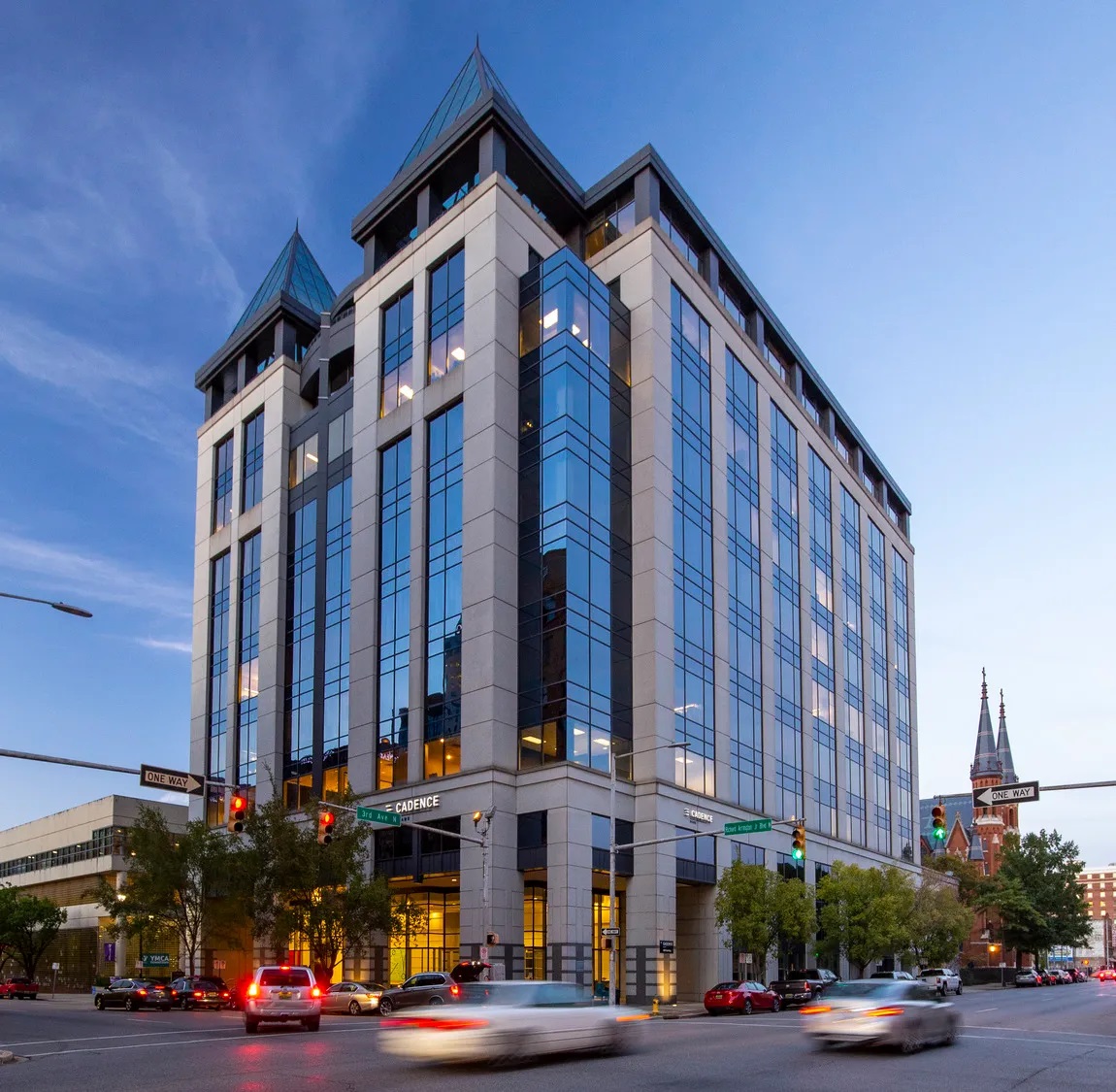
Earlier this month, the Concord Center gathered its original team of developers, contractors, and architects to open a time capsule that was buried 20 years ago when the building first opened its doors. The time capsule contained a variety of memorabilia which dated back to the early 2000s. The Concord Center, which opened in 2002 as a new office building in Downtown Birmingham, was a pivotal development in sustaining offices and employment downtown over the last two decades. Want to learn more about why exactly this building is so significant to the history of Birmingham? Keep reading to find out!
A commitment to downtown employment
It was the first of two new major office building additions that opened in 2002, the second being One Federal Place. Concord Center represented a fresh commitment to downtown for offices and ushered in a new era of Class A offices when many were still not fully believing in downtown Birmingham’s future! It paved the way for other employers to move their offices downtown by showcasing the potential that lives in the heart of our city.
Adding vibrancy to the city
Parking lots can often dull the life and vibrancy that lie within a city. When the original building on this site, the Jefferson County Courthouse, relocated to its current home the building was demolished. It had been a parking lot since 1937 and the Concord Center filled a gaping hole in the streetscape of downtown. It showed us the value of finding vacant sites for new construction and not demolishing historic buildings to make way, proving that the two can live together.
Created through daring problem solving
Brookmont Realty, the developer of the Concord Center, alongside architects Williams Blackstock and builder Bill Harbert International, worked with Operation New Birmingham (now known as REV Birmingham), the City of Birmingham and the YMCA to make this development possible. The YMCA owned and needed the parking lot, but the combination of city incentives and creative deal making provided the YMCA replacement parking and enabled the new building to fill in the downtown skyline!
Modern Design respects history
The Jefferson County Courthouse that was original to the site was a Richardsonian Romanesque style building with a massive 180-foot-tall domed clock tower. It was one of the largest and most distinctive structures in Birmingham for many years. Williams Blackstock’s design of Concord Center features a pair of twin pyramids rising above the western roof line. These 37-foot-tall pyramids pay homage to similar structures that once adorned the 1889 courthouse!
Related News
-
Safeguarding history, one preservation easement at a time
Filed Under: Developer, Front Page, Historic Preservation, Yaysayers
As longtime preservation advocates, we’re also proud to introduce REV’s own Historic Preservation Easement Program, created to help safeguard Birmingham’s irreplaceable architecture while adding long-term value to development projects involving historic properties.
-
Preservation that pays: How historic tax credits can power a downtown revival
Filed Under: Developer, Downtown Birmingham, Front Page, Historic Preservation
For preservation advocates (or “building huggers,” as we like to call ourselves), historic tax credits are essential. They don’t just help save historic buildings — they support local economies, encourage private investment and breathe new life into spaces that shape the identity of our communities.
-
Date night done right: Romantic outings you’ll fall for in Birmingham
Filed Under: Birmingham Food & Drink, Downtown Birmingham, Family Friendly, Front Page, Residential, Yaysayers
Looking for the perfect way to spend quality time with your special someone? In this guide, we’ve rounded up a variety of Magic City date ideas tailored to different tastes, personalities and interests. So, grab your partner, or even a few friends, and explore some of Birmingham’s best spots for a truly memorable time.